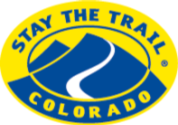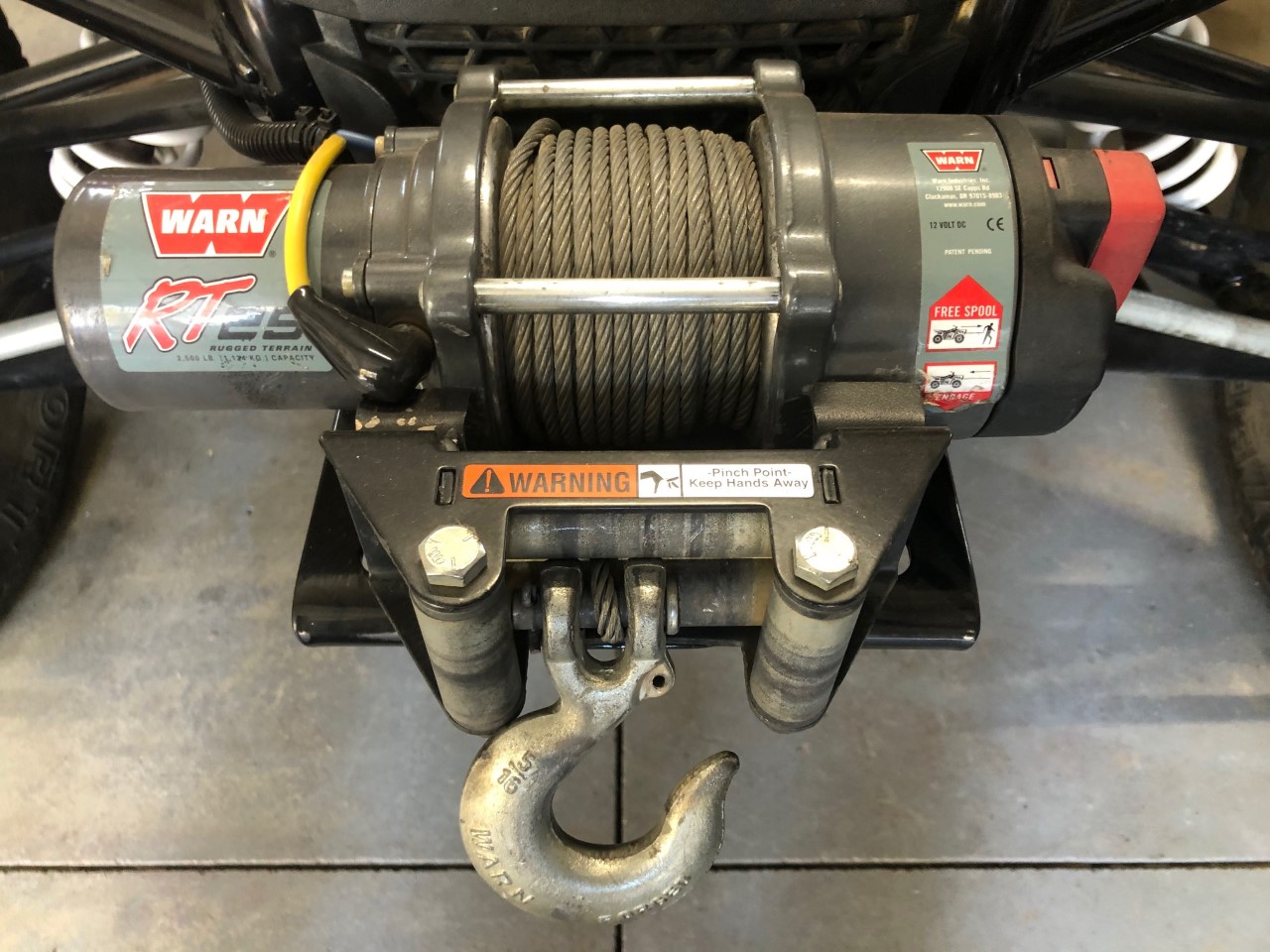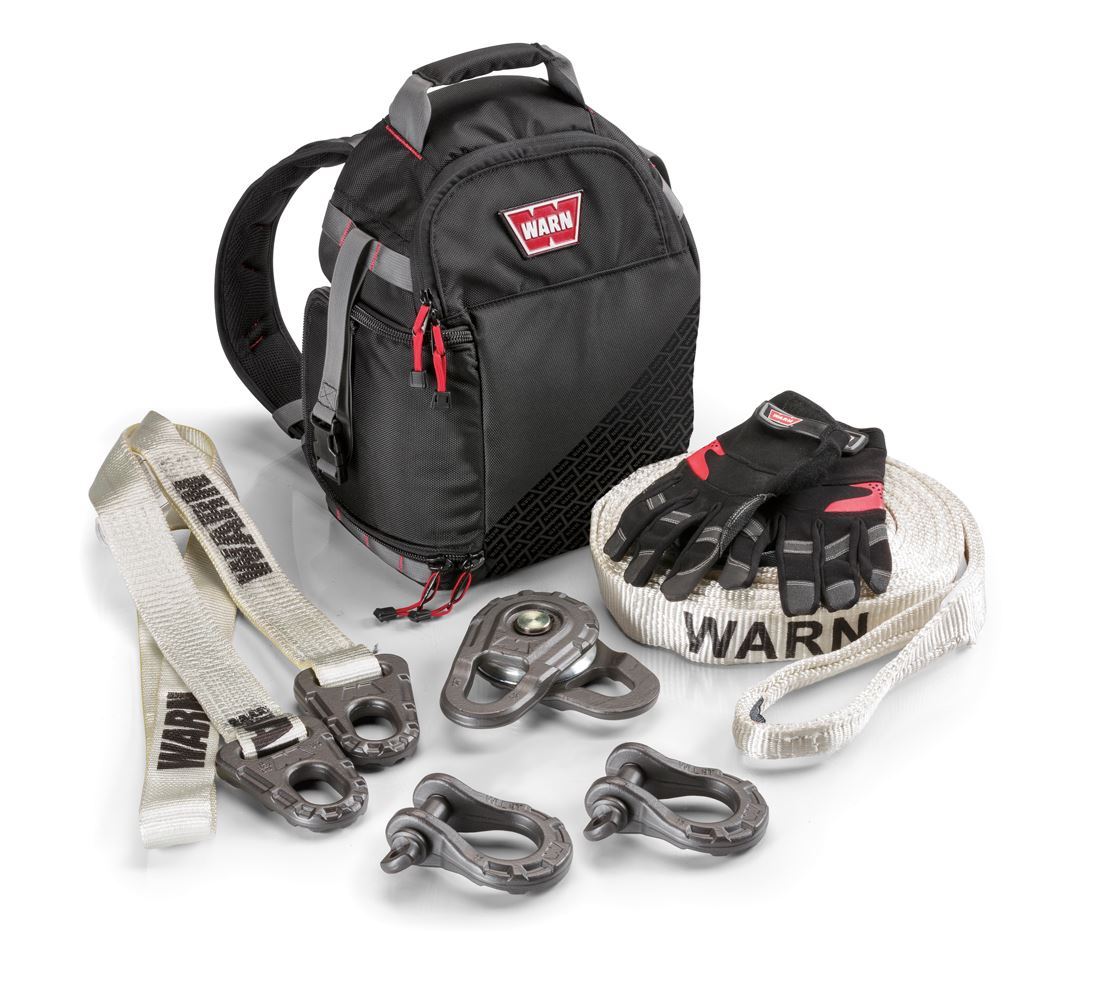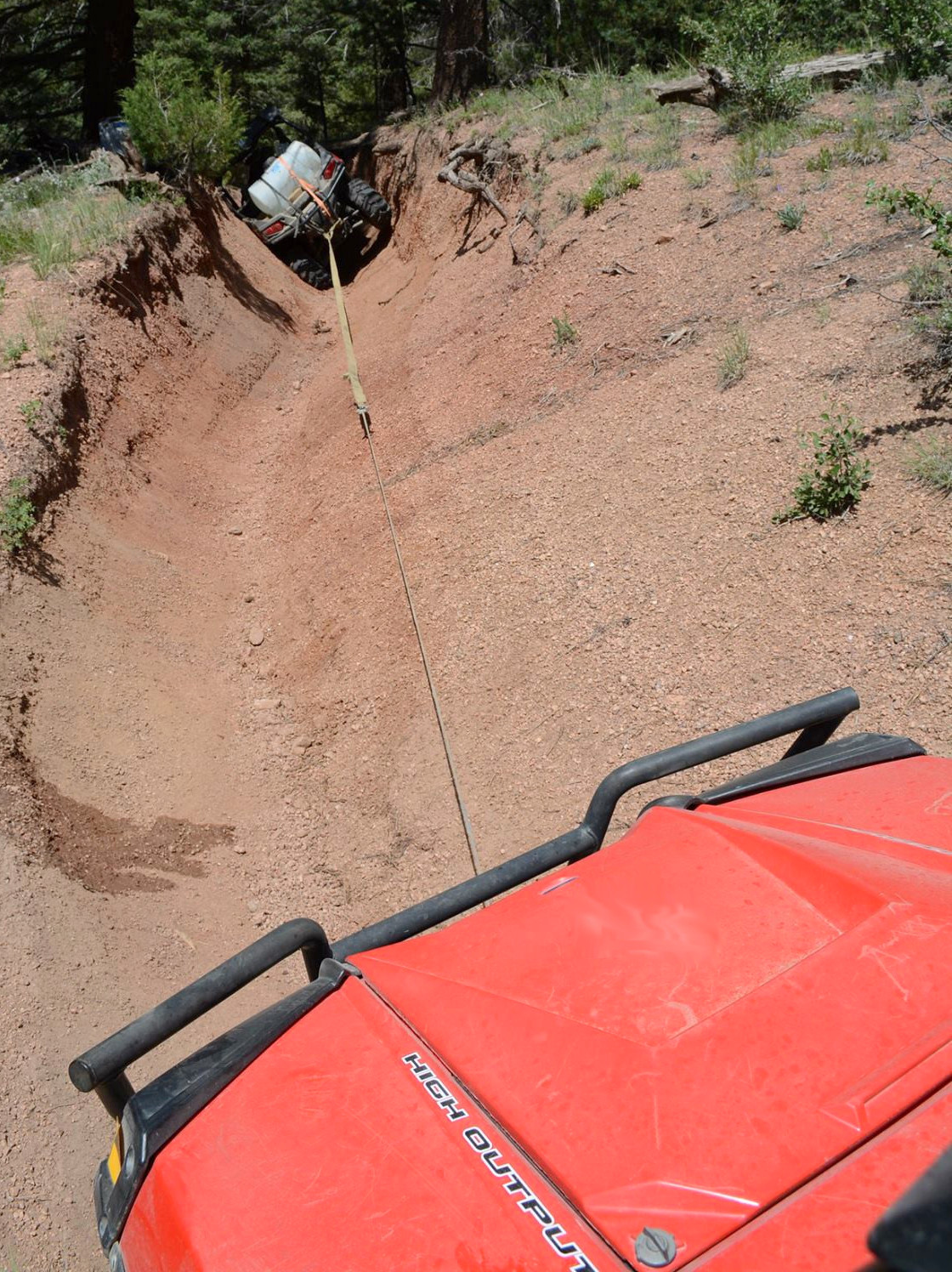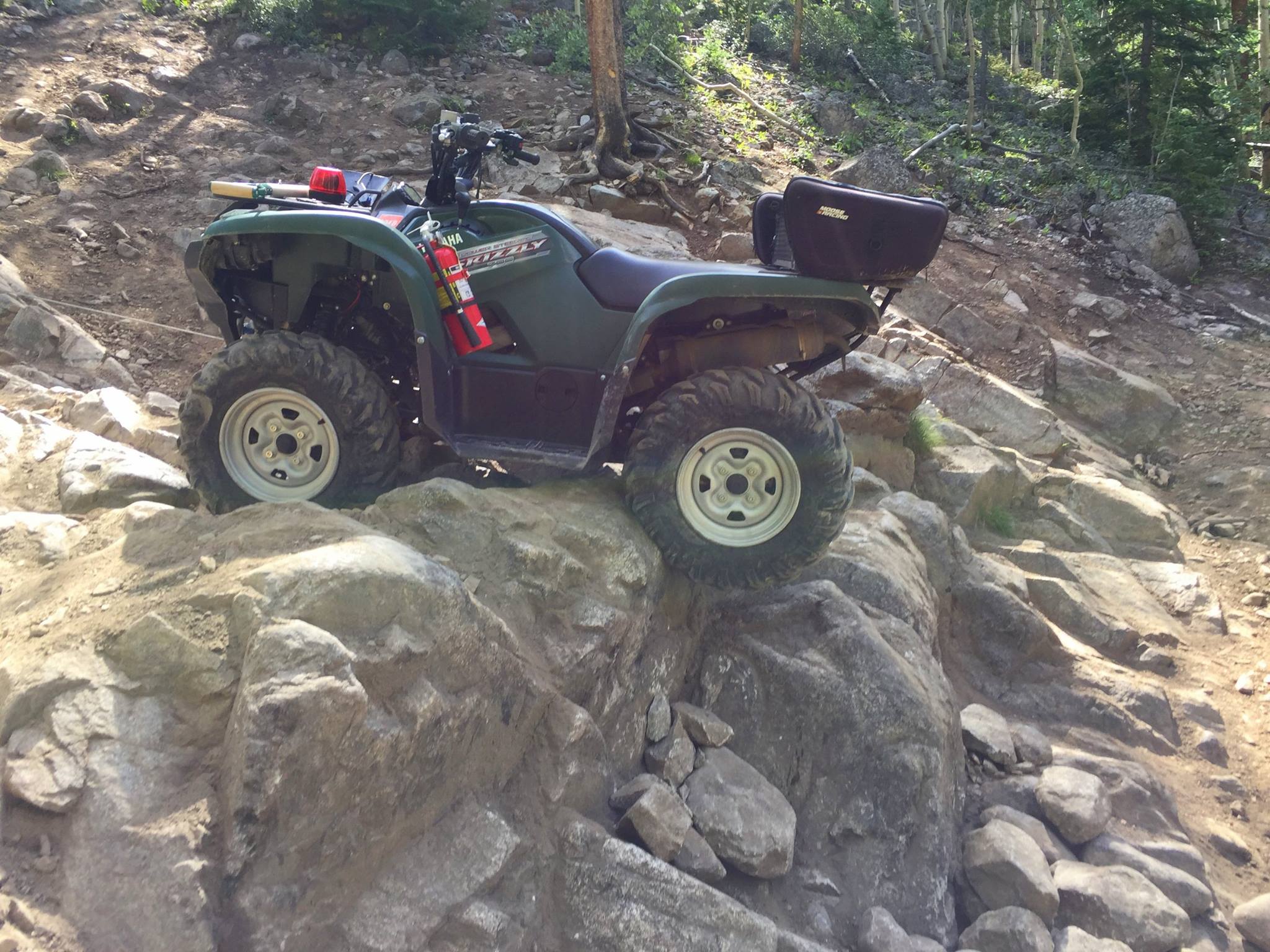Winching Tips and Tricks
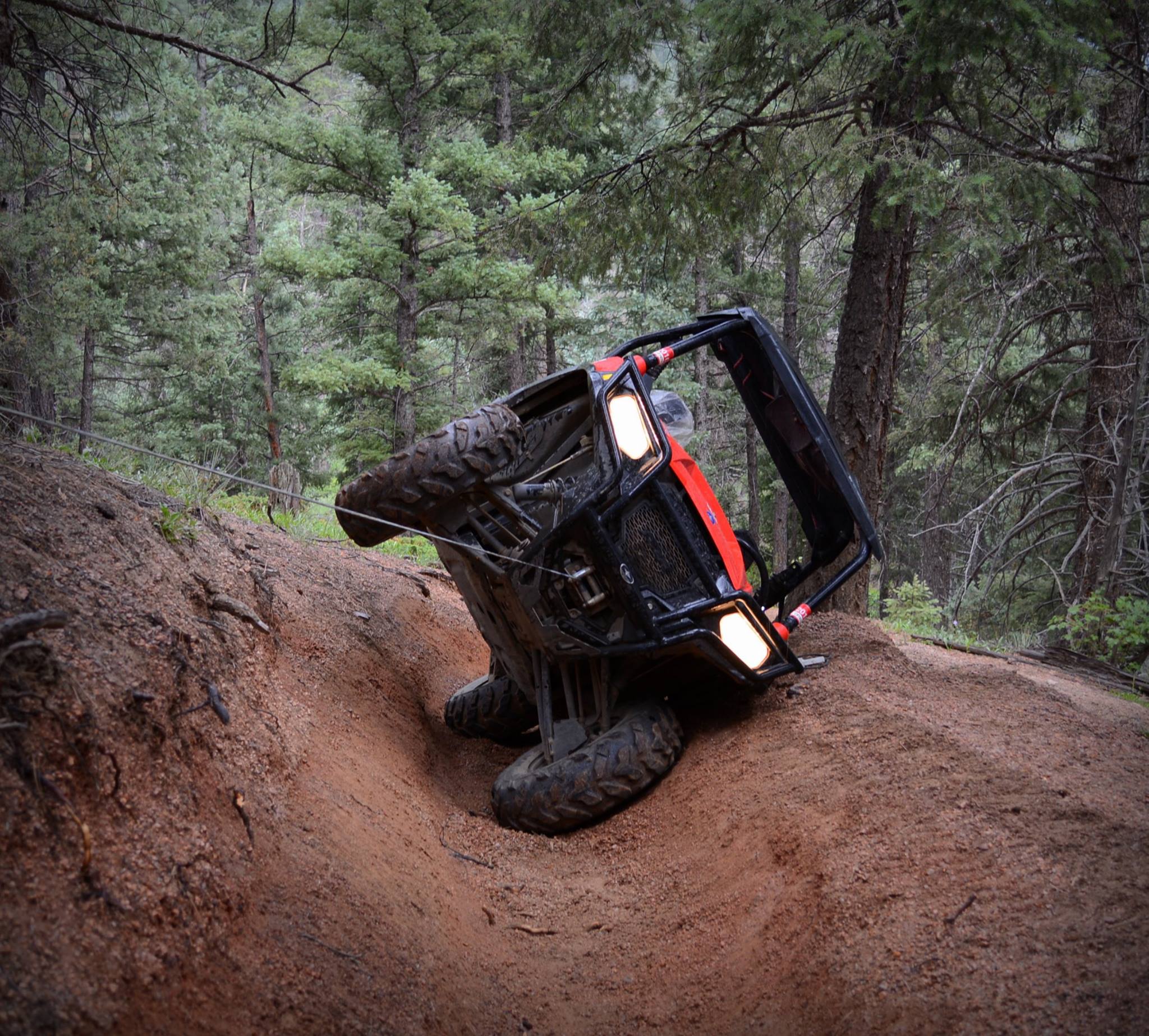
Whether your pulling yourself out, or someone else, having a winch on your OHV is a necessity! Read our tips on selecting and using a winch below!
Selecting a winch:
There are many manufactures out there who supply winches. Try to stay clear of the off-brand low price companies as quality and build are compromised. When you are in the situation of needing to use your winch, it must work, and work well!
When choosing a winch, make sure it is rated for the job it will be accomplishing. The best idea is to aim for a MINIMUM of 1.5 of your vehicles loaded weight for the pull rating of the winch. (Example a 1000 pound OHV would need at least a 1500 pound pull rating.) Keep in mind when you are stuck, forces such as gravity, terrain, soil conditions, slope, etc., will amplify the exertion force needed to pull your vehicle.
Cable or synthetic line? The way of the future is synthetic line, or rope. Most winch manufactures offer either, but synthetic line is becoming the norm in the industry. Why? Cable is prone to fraying, pinching itself on the reel, and snapping which can have horrible consequences. Rope on the other hand is lighter, safer to handle, rated for higher loads than cable, and can be easily spliced if broken.
Controls: Different manufactures also provide different types of controls to operate your winch. The most common are handlebar mounted switches, dash mount switches, corded remotes, and wireless controllers. It is always best to have at least a couple of options for redundancy. Handlebar or dash switches should always be combined with a corded remote to allow for a safety area while winching. There are times when you don’t want to be on or in your OHV while winching. A corded remote also allows you to reel in your line properly on the spool. Wireless controllers are becoming more common, but have a split second lag time, which makes precision winching difficult. You are also at the mercy of the battery and electronics during inclement weather or long storage periods.
Fairleads: “Roller” and “Hawse” refer to the different types of guides found on the front of your winch. Typically, the roller styles are found with cable, but can be used with synthetic rope IF they are clean and bur free. Roller styles stick out a bit further and are heavier but allow for front license plate mounting with specific hardware. Hawse are more streamlined with an almost flush mount appearance. Aluminum hawse fairleads should ONLY be used with synthetic line.
Accessories and Rigging:
Gear is just as important as your winch. Many companies sell “winch accessory kits” which provide hard shackles (also called D-Rings), a tree saver strap, a longer town strap, a snatch block (used to redirect your winch pull) and leather work gloves. “Soft shackles” are now in the market, and offer a lighter but stronger replacement to the steel D-ring style shackle. Soft shackles are flexible to help get into tighter areas, and are easier and quieter to store. Of all the accessories, a tree saver strap and shackle are a MUST have.
Full size vehicles have more storage room, therefore can carry other options of accessories and rigging such as a high-lift jack, pull-pall, and other portable ground anchors.
Hooking up:
Always READ your winch operation manual prior to using, and familiarize yourself with its’ controls and features.
Depending on your situation, it is best to leave your OHV on and running while winching to avoid battery drain. Raising the RPM’s in neutral or park will help the charging circuit compensate for the increased load, but a long sustained pull can still deplete the battery.
Most winches come with a “free-spool” and “power-out” function. Free-spool disengages the motor gear so you can pull the cable “freely” to your hook up location. Power-out uses the winch motor power to reel out the cable.
While winching, don’t let people stand in the area. Don’t step over the rope or cable. Always keep a safe distance. Place a heavy jacket or other soft weight in the middle of the winch line when pulling the vehicle. This can help by deflecting the energy if the cable should snap. Always wear gloves when handling the winch line, especially with cable! Leave at least 2 full cable reels on the spool.
If your are winching yourself out, find an object suitable for supporting your needed pull load. If you are hooking to a tree, ALWAYS use a tree strap to wrap around the base and connect both ends with a shackle. Then, attach the winch hook to the shackle. Be wary of Aspen, Pinion, Lodgepole and Juniper Trees as their root structure is shallow. Major obstacles on popular trails might be equipped with permanent winch anchors.
If you are pulling someone else out, find an appropriate location on their OHV to connect a shackle. DO NOT connect to a tow ball. A tow ball is for vertical load and will also have a hard time securing the winch line or strap. If equipped, remove the tow ball or hitch insert and attach the loop end of a strap into the hitch and secure with the hitch pin. If your OHV moves towards the stuck vehicle, it might be necessary to anchor yourself to a tree or rock. Again remember the load forces and use a snatch block to amplify winching forces. NEVER jerk on the winch line. It is not designed as a tow rope.
Make sure your winch is fully engaged and ready to “power in” before your start your pull. Slowly take in the slack and make sure all persons involved have communication and line of sight.
Long distance pulls or very stuck vehicles will cause increased heat and friction on your winch. Give your winch cool down periods and allow your alternator some more time to charge your battery.
Winching:
Ideal winching circumstances are when you can do a “straight” pull. Keep your tires turned in the same direction as the winch line.
If applicable, the stuck vehicle can apply slight throttle while in gear to assist the winching operation. DO NOT drive over the winch line.
Make sure the winch line does not build up on one side of the winch. If it begins to, halt operations and release the line until it is in a uniformed location. Guide the winch line onto the spool by applying tension and pulling to one side or the other while “powering in”. USE CAUTION and keep your hands at least 12 inches from the fairlead and watch loose clothing or jewelry.
Only use your winch until the stuck vehicle can regain full traction under its’ own power.
When done with your winching operations, it is advisable to completely reel in your entire winch line. This will help prevent dirt, mud, and rocks from getting into the spool, and from damage that could occur to exposed line. Having a slight load on the end of the winch line while spooling will help keep the line tight and make it easier to coil.
Try to leave as little of an impact as possible when winching and remember to Stay The Trail!
